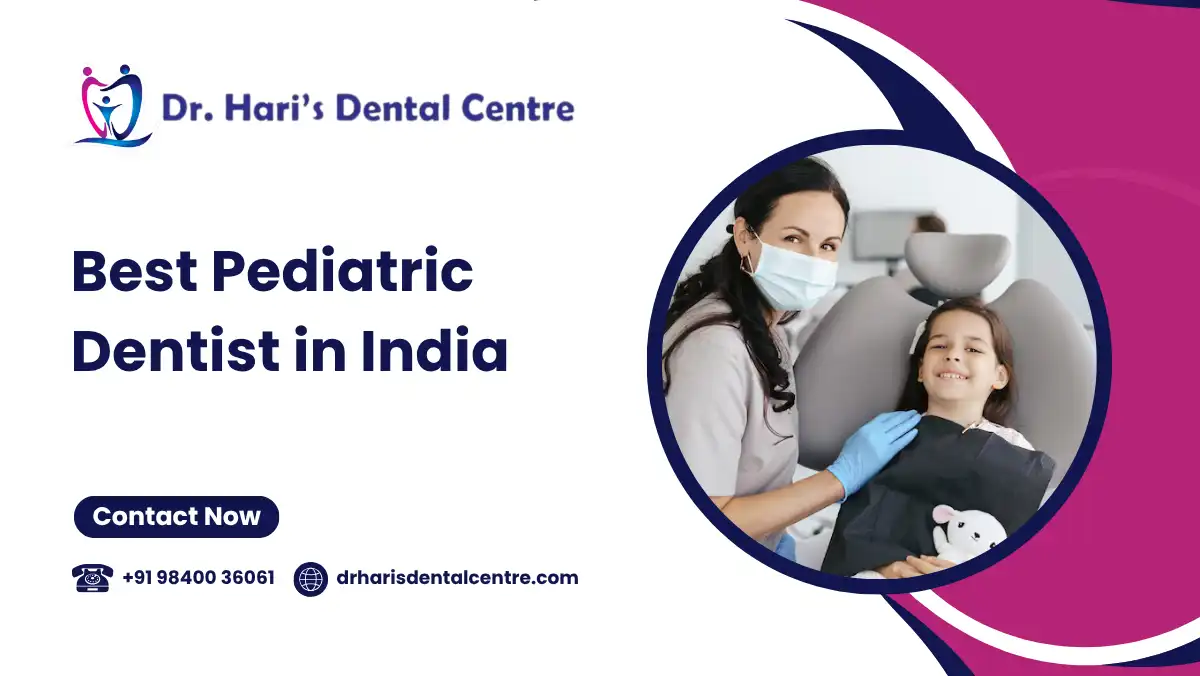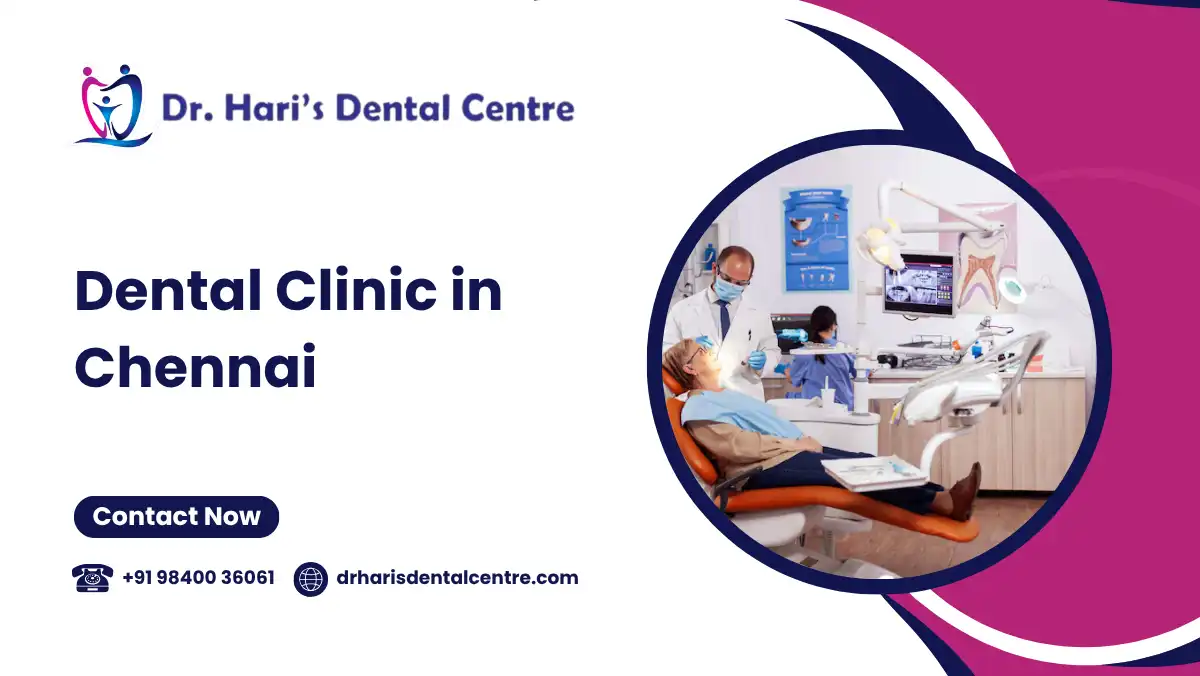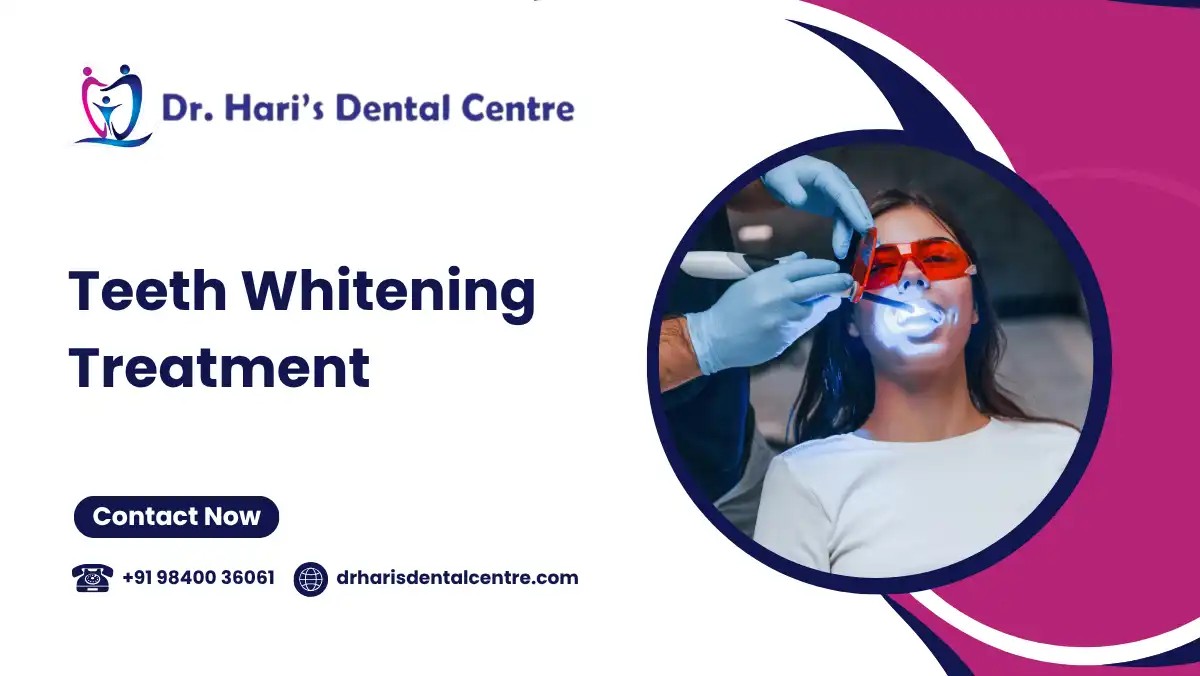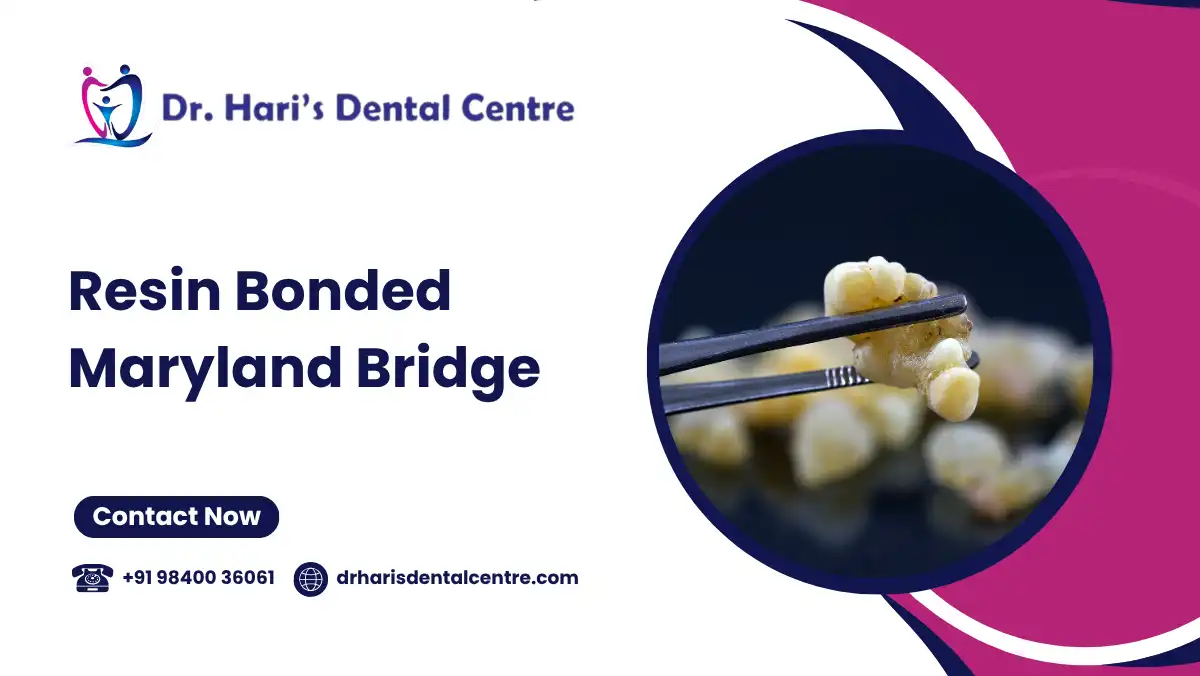Oral surgery is a specialized field that addresses complex dental and facial conditions beyond routine care, such as impacted teeth, severe infections, or structural deformities. It is crucial for both children and adults, helping to restore function, prevent complications, and improve aesthetics. For children, early intervention can guide proper jaw growth and prevent future issues, while in adults, oral surgery corrects problems caused by trauma, decay, or age. With modern imaging and surgical tools, these procedures ensure safe and effective care. Oral surgery alleviates pain, restores oral health, and enhances overall quality of life by improving facial balance and symmetry.
Tooth Extractions
Tooth extraction is a common oral surgery performed when a tooth is beyond saving due to damage, decay, or disease. For children, it may be needed to create space for permanent teeth or address severely decayed baby teeth. In adults, extractions are often necessary due to advanced decay, gum disease, or fractures that impact tooth function or appearance. The procedure is performed under local anesthesia or sedation for comfort, with minimal trauma to surrounding tissues. Post-operative care is crucial for recovery, and modern techniques help preserve bone and gum health, ensuring suitability for future dental treatments like implants or dentures.
- Severe Tooth Decay: When a tooth is extensively decayed and cannot be saved through fillings, crowns, or root canal therapy, extraction becomes the only viable solution to stop the spread of infection and relieve pain.
- Advanced Gum Disease: In cases of periodontal disease where the supporting bone and gums have deteriorated significantly, the affected tooth may become loose, requiring removal to protect surrounding healthy structures.
- Fractured or Damaged Teeth: Teeth that are broken below the gumline, cracked vertically, or damaged beyond restorative repair must be extracted to restore oral health and prevent further complications.
Wisdom Teeth Removal
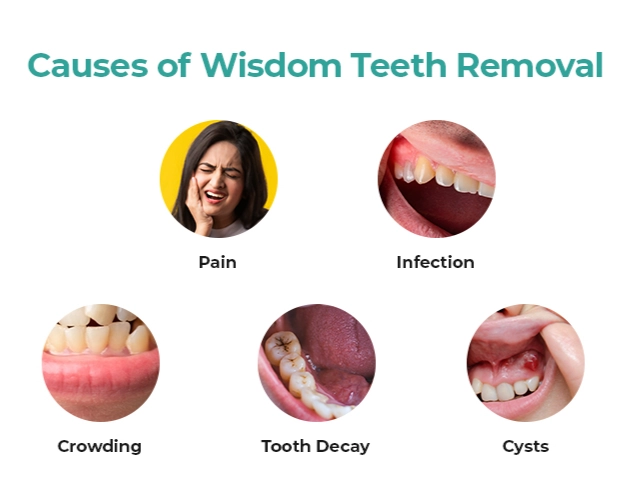
Wisdom teeth, or third molars, are the last set of teeth to emerge, usually between the ages of 17 and 25. In many cases, there isn’t enough space in the mouth for these teeth to erupt properly, leading to impaction, misalignment, or partial eruption. Such conditions can result in pain, swelling, infection, and even damage to nearby teeth. Surgical removal is often advised for both late adolescents and adults to prevent or address these issues before they worsen. Timely extraction of problematic wisdom teeth supports better oral hygiene and prevents long-term complications.
- Impacted Teeth Beneath the Gums: When wisdom teeth remain trapped within the gums or jawbone, they can cause pressure, infection, and swelling. Removing impacted teeth prevents painful cysts or abscesses and preserves jaw health.
- Recurrent Pain and Infection: Partially erupted wisdom teeth can trap food and bacteria, leading to inflammation, gum infections, or difficulty chewing. Removal relieves symptoms and protects surrounding tissues.
- Crowding and Tooth Misalignment: As wisdom teeth push against existing teeth, they can disrupt orthodontic results or natural alignment. Extraction ensures a stable, well-aligned dental arch.
- Treatment for Young Patients: Early removal during the teenage years is ideal, as developing roots are easier to extract and recovery is typically faster.
- Adult Cases and Recovery: Adults may require more complex procedures, but precise surgical techniques and effective anesthesia ensure minimal discomfort and safe outcomes.
Impacted Teeth Removal
Impacted teeth are those that do not erupt properly through the gum line due to a lack of space, incorrect angulation, or obstruction by adjacent teeth. While commonly associated with wisdom teeth in adults, impacted canines and premolars are often seen in children and adolescents. If left untreated, impacted teeth can cause pain, crowding, infections, cyst formation, or damage to adjacent healthy teeth. Timely diagnosis and removal or guided eruption are essential to prevent complications and maintain overall oral function and aesthetics.
- Persistent Swelling and Delayed Eruption: Ongoing gum swelling, pain, or the absence of expected tooth eruption may indicate impaction. Early diagnosis through a clinical exam helps determine if surgical intervention is needed.
- Crowding and Shifting of Teeth: Impacted teeth can place pressure on nearby teeth, leading to crowding, bite changes, and misalignment, especially in growing children. Removing the obstruction can preserve arch integrity.
- Abnormal Positioning Seen in X-rays: Radiographic imaging often reveals impacted teeth beneath the surface that may be angled, inverted, or stuck against adjacent roots, requiring a precise surgical plan.
- Surgical Approach for Children: Exposure and bonding techniques help guide impacted teeth into alignment with orthodontic support, preserving their function and appearance.
- Adult Treatment Strategy: Careful removal with minimal bone disruption ensures a safe recovery, especially when the tooth poses a threat to nearby structures.
Therapeutic Extractions
Therapeutic extractions are planned dental procedures performed to support comprehensive oral health treatment goals. Unlike emergency extractions, which respond to acute issues, therapeutic extractions are part of a long-term strategy to optimize function, aesthetics, and stability. These extractions may be recommended for both children and adults, particularly when certain teeth interfere with orthodontic alignment, prosthetic placement, or periodontal healing. The objective is not just to remove a problematic tooth but to create the best conditions for future oral health success.
- Creating Space for Orthodontics: Selected teeth are extracted to relieve overcrowding and create ideal spacing for braces or aligners, ensuring effective and lasting orthodontic results in children and adults.
- Preparing for Restorations: Non-functional or infected teeth may be removed to provide a clean, stable foundation for bridges, dentures, or implants, reducing the risk of future complications.
- Reducing Chronic Infection or Inflammation: Teeth that continuously contribute to gum disease, abscesses, or bone loss are extracted to improve overall oral health and prevent systemic effects.
- Child-Focused Extractions: These are often used to prevent malocclusion and support proper eruption of permanent teeth, minimizing the need for complex correction later.
- Adult Applications: Extractions are part of implant planning, full-mouth rehabilitation, or to control periodontal disease, all aimed at restoring oral function and aesthetics.
Alveoloplasty / Genioplasty
Alveoloplasty and genioplasty are specialized oral surgical procedures that enhance both function and facial balance. Alveoloplasty involves reshaping and smoothing the jawbone, often after extractions, to ensure a stable and even surface for dentures or other restorations. Genioplasty, on the other hand, focuses on the chin, allowing for repositioning or reshaping to improve facial aesthetics and structural alignment. These procedures serve both children and adults—children may require them to correct congenital or developmental anomalies, while adults often benefit from functional or cosmetic improvements.
Alveoloplasty Use Cases
Performed after extractions to prepare for dentures, alveoloplasty eliminates sharp bone edges and irregularities, creating a smooth ridge for optimal denture fit and comfort.
It corrects bony distortions that can interfere with chewing, speaking, or wearing prosthetics.
The procedure supports the long-term success of dental restorations by stabilizing the soft tissue and minimizing irritation.
Genioplasty Objectives: Enhances facial proportions by modifying the size or projection of the chin, improving overall harmony. In children, it addresses developmental imbalances to support proper jaw and airway development. In adults, it refines the lower facial profile and may assist in sleep or breathing-related conditions.
Approach and Recovery: Both surgeries are image-guided and performed under anesthesia for precision and comfort. Recovery is typically smooth, with follow-up care supporting stable, aesthetic, and functional outcomes.
Conclusion
Oral surgery is a vital part of dental care, treating conditions that affect mouth health and function. From extractions in children to jaw correction in adults, these procedures offer lasting solutions. Whether it’s removing impacted teeth or reshaping bone for dentures, surgery is carefully planned for best results. At Rayen’s Dental Clinic, every procedure focuses on comfort, safety, and precision. Using advanced tools, the team provides expert care for all age groups. Timely surgery prevents complications, aids healing, and supports long-term oral health.


